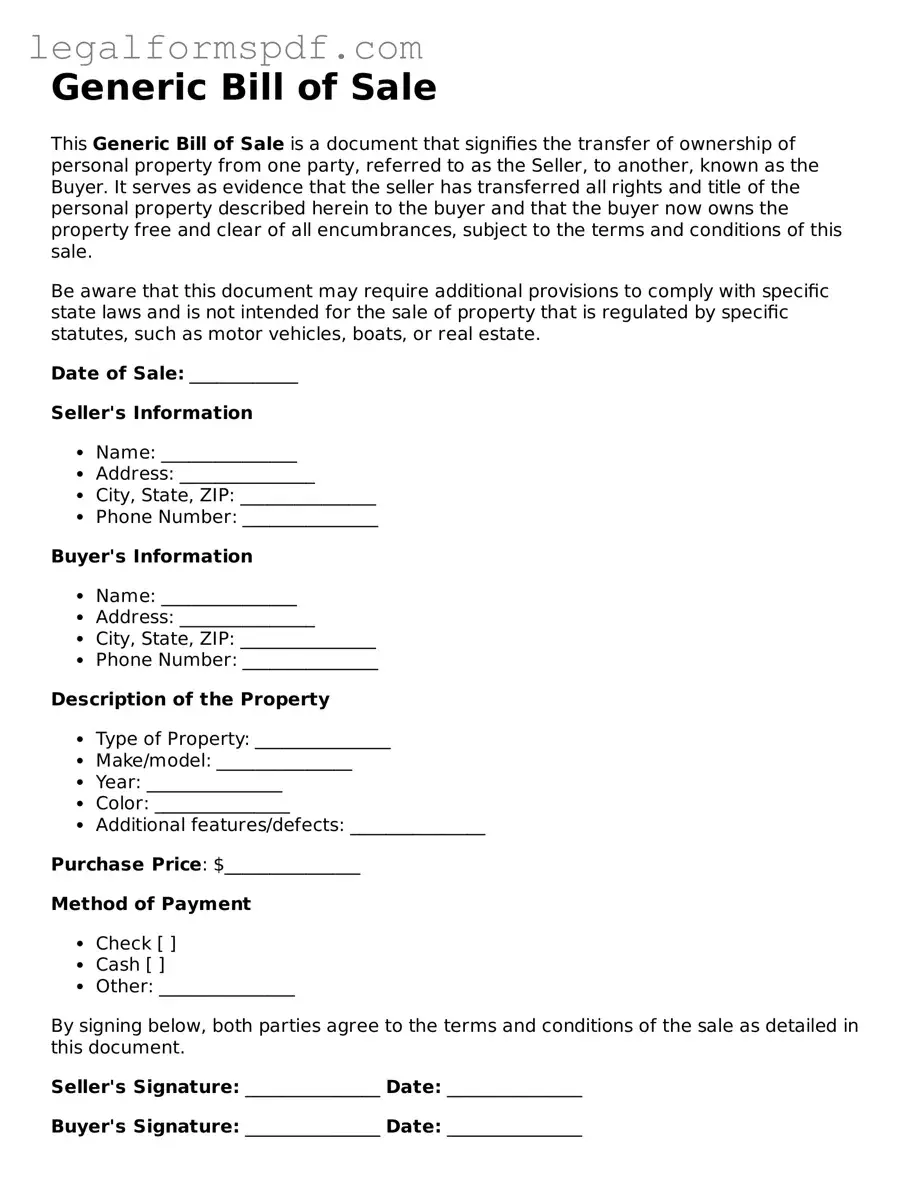What is a Bill of Sale?
A Bill of Sale is a legal document that records the transfer of ownership of a piece of personal property from the seller to the buyer. It serves as evidence that an item was sold by one party to another and details the terms and conditions of the sale, including a description of the item, sale price, and date of the transaction.
Why is a Bill of Sale important?
This document is crucial because it provides written proof of the transfer of ownership. It protects both the buyer and the seller in the event of disagreements or disputes about the transaction. For the buyer, it confirms the acquisition of the property. For the seller, it shows the item was legally transferred and relinquishes their responsibility over it.
What information should be included in a Bill of Sale?
A Bill of Sale should contain significant details such as the names and addresses of the buyer and seller, a thorough description of the item being sold (including serial numbers or identification numbers if applicable), the sale price, the date of sale, and the signatures of both parties involved. It may also include terms of the sale, warranties, or the condition of the item.
Do I need to notarize my Bill of Sale?
The necessity of notarization varies depending on the type of property being sold and state laws. While not all Bills of Sale require notarization, having the document notarized can add an extra layer of legal protection, ensuring that the signatures are verified and the document is considered more credible in court if disputes arise.
Can a Bill of Sale be used for all types of property?
While Bills of Sale are commonly used for the sale of tangible personal property such as vehicles, boats, and electronics, they may not be suitable for all types of property. For instance, real estate transactions require a more complex legal document known as a deed. Before finalizing a sale, it's important to determine whether a Bill of Sale is the appropriate document for the transaction.
Is a Bill of Sale binding in all states?
Yes, a Bill of Sale is legally binding in all states, provided it contains all the necessary information and is signed by both parties. However, the specific requirements for a Bill of Sale can vary from state to state, so it's important to ensure that your document complies with local laws to be considered valid.
What should I do after completing a Bill of Sale?
After the Bill of Sale is completed and signed, both the buyer and the seller should keep a copy for their records. The buyer will need the document to prove ownership and possibly register the item with state or local agencies, if required. It’s also wise to check if any additional steps are necessary based on the type of property sold or local laws.
